

HomePage | Optical Illusions | War Stories | QBasic | Dads Navy Days | Bristol | Bristol, USA | Bristol, Canada | Terre Haute | Miscellany | Web Stuff | About Ray | Site Map | Site Search | Messages | Credits | Links | Web Rings
Bristol | Place Names | Legends, Pre-history and the Romans | Birth of the City | 1100 Onwards | Voyages | 1450 Onwards | 1650 Onwards | 1700 Onwards | Riots | The Blitz (Page 1), (Page 2) | The Castle (Page 1), (Page 2), (Page 3), (Page 4), (Page 5), (Page 6) | Blaise Castle (Page 1), (Page 2) | Castle Green (Page 1), (Page 2) | Union Street | Broadmead | The Old City (Page 1), (Page 2), (Page 3), (Page 4) | Christmas Steps (Page 1), (Page 2) | St. Mary Redcliffe (Page 1), (Page 2), (Page 3) | College Green (Page 1), (Page 2) | King Street (Page 1), (Page 2) | Clifton (Page 1), (Page 2) | Avon Gorge (Page 1), (Page 2), (Page 3) | Hotwells (Page 1), (Page 2) | City Docks (Page 1), (Page 2), (Page 3) | Bedminster (Page 1), (Page 2), (Page 3), (Page 4), (Page 5), (Page 6), (Page 7) | Old Market (Page 1), (Page 2) | St. George (Page 1), (Page 2) | Temple (Page 1), (Page 2), (Page 3) | Arno's Vale Cemetery (Page 1), (Page 2) | Brislington | @ Bristol | Oldest House | I. K. Brunel (Page 1), (Page 2) | Ma Pugsley | Yeamans | Boundaries (Page 1), (Page 2) | Photography | Exhibition (Page 1), (Page 2) | Lead Working | Historical Perspective | Virtute et Industrial | Other Sites | Bibliography (Page 1), (Page 2) | Help Wanted (Page 1), (Page 2), (Page 3)
Temple Parish - 3
Dr. White's Almshouse (Temple Hospital)
Bristol's earliest almshouse was founded in 1292 by Simon Burton, a merchant who was five times lord mayor of the city. The almshouse was situated between St Thomas' Street and Temple Street in Long Row and had to be rebuilt twice, until the final Georgian building was destroyed in the Blitz.
Thomas White was born the son of John White, a clothier, in Temple Parish in 1550. He attended Magdalen College, Oxford, settled in London and was promoted rapidly within the Church, where he held several important offices. In 1613, he founded the Temple Hospital. He had no children and perhaps was finding a way of putting his wealth to good use. Whatever the reason, the almshouse was built in Temple Street for ten "poor and impotent" people, which he called "brothers and sister." His deed of gift lists the first residents as included William Cox, John Durnel, Roger Neave, Henry Williams, John Witterlie, Richard Barratt, Thomas Whiteing, and two widows, Ellen Davies and Thomasin Westley. He placed at their head the eldest man, William Cox, who was named as the "Antient Brother".
Dr White governed the almshouse during his lifetime, to be succeeded by his brother and
two of the "antientest Aldermen" of the City, the Town Clerk and by the Chamberlain.
On the direction of Dr White, an annual dinner was to be provided for the trustees, on
St. Thomas' Day, (the anniversary of the founder's birth). He allowed forty shillings for the dinner that became known as the
"Pease and Pork dinner". It must have been one of the annual highlights, as the "Livery House" was decorated with
rosemary and the pewter was polished. The trustees would tour the almshouse, to hear any complaints, and then sit down to a fine dinner.
In times gone by the almshouse residents would dine well on the remains. The St. Thomas' day dinner continues to this day, attended by
almshouse residents, trustees and the Lord Mayor. Dr. White's Almshouse In 1615, Dr. White made another gift in that part of the rent collected from some houses
he owned in London be used for charitable purposes. £6 of this money was to be used for his almshouse. Dr. White died on 1st March 1624, aged 74 years, and was buried in the chancel of St.
Dunstan's. In his will, dated 1623, Dr White also left a number of other charitable gifts, including £3,000 for the building of an
ecclesiastical college and an almshouse within the City of London, called Sion College. The London almshouse was closed in 1884 and the
Sion College library closed in 1996. The Doctor also left the sum of £100 a year for the repairs of the highways about
Bristol; he especially specified ten miles on the Oxford Road, and the whole of the road to Bath, via Hanham and Bitton, and five miles
in every road leading to a market town in either Somerset or Gloucestershire. This money was later, at least in 1900, being used to help
support Bristol Grammar School. He also left directions in his will for a number of interesting bequests including £40 to
buy chains and manacles for the prisoners of Newgate prison, so that they could be taken to St. Dunstan's to join in the worship, so
that the "air might benefit their bodies, the preaching their souls and their sight and shame an example to the
people." Dr White's brother, George White, a merchant, also left his own legacy, which can still
be viewed today. In 1631 he made a gift of one of the four brass pillars that now stand before the old Exchange building in Corn Street.
The pillars were used by merchants, in lieu of tables, for making payments, writing letters etc. These were the famous "Bristol
nails" that generated the expression, "to pay on the nail." He also left money to provide loans to clothiers, materials
to keep the "poor at work" and for the relief of prisoners in Newgate, the prison that used to stand between Narrow Wine
Street and Castle Mill Street. In 1824 the almshouse was completely rebuilt, with a modern and simple Gothic front,
designed by Edward Brickden, a student of the architectural school of Robert Smirke, who designed the British Museum. This enlargement
of the almshouse meant that the statue of Neptune which stood in front of it, had to be moved. At this time the almshouse consisted of a
parallelogram of small gabled buildings, with a narrow grass plot running up the centre. In March 1882, the Governors decided to completely rebuild the almshouse again. The
opening ceremony of the new building took place on 21 December 1883. This building was demolished in 1968 to make way for a fire station
and new almshouses were built at a site in Prewett Street, near St. Mary Redcliffe. These almshouses still provide accommodation for 18
residents, together with a warden. The trustees consist of four people appointed by the City Council and another nominated by the Bishop
of Bristol. Dr. White's Almshouse with Neptune's Statue Temple Conduit Temple conduit was built in 1561. It ran from springs in Totterdown, somewhere near the
Three Lamps, in lead pipes to a public cistern in Temple Gate and from there down Temple Street to the fountain Neptune's statue
fountain and from there to the vicarage. Nicholls and Taylor (Volume 1, page 140) has a nice description of the springs, "You enter
the cavern by a door at the side of the hill, on the very back of the Avon on the left hand of the Bath Road at Totterdown, and passing
through a narrow cut in the rock for 125 yards exactly in length, you come to the reservoir or large trough of freestone, into which
three or four springs rising with force through crevices in the bottom of the rock are continually flowing in bubbling streams."
They go on to say that the roof of the rock is 10 to 20 feet high in places. Neptune's Statue Everyone agrees that this is a great statue, but it doesn't seem to be able to find a
permanent home. In 1723, the reservoir for Temple Conduit, which was first built in 1586 was rebuilt. During the rebuilding the lead
statue of Neptune, cast by Joseph Randall, was erected on the renovated structure. The statue was moved in December 1787, from Bristol
Bridge to the corner of Bear Lane and Temple Street, outside where Dr. White's almshouse came to be built. This cost the Bristol Bridge
Trustees £45 for the new plot of land for it. The poor statue has been dragged all over the city over the years. The almshouse wanted to
expand and in 1824 it was moved to glebe (church) land, for which the trustees of Dr. White's paid £3 per annum. It managed to stay
there until 1872 when it was moved to the corner of Temple and Victoria Streets. It was moved to the Quay Head in the city centre in
1949. In 2001 it was moved during the redevelopment of the city centre and now stands in the middle of it. Neptune's Statue Neptune's Statue Looking at these two photographs it looks like Neptune was dismantled at some time and
then put back together. In the 2004 photograph his right hand has been lowered and so has the fish. Photos from 1939 show the arm and
fish still in their original position. Local legend has it and several books repeat that the statue was cast as a celebration
of the defeat of the Spanish Armada, but this seems incorrect as the statue first appears in 1586, but the Armada wasn't launched until
1588. Temple Cross In 1786, a new road was built in the parish. This was Bath Street and it was built to
connect Bristol Bridge with the beginning of Temple Street at a cost of £12,000. In building Bath Street the Bristol Bridge Trustees
destroyed the ancient Tucker Street and the Tucker Street Chapel. In January 1794, the trustees ordered that the Temple Cross or Stallage Cross, at the
corner of Bath and Temple Streets, also be removed. The cross had been used as a preaching place by the vicar of Temple Church for
around 200 years. In 1775, it had been converted to a "watchbox". It appears that there was a public outcry at the removal of
the cross because it wasn't removed until 13th August - and then in the middle of the night. It was the last surviving public Cross in
Bristol. Stallage, is the rent paid by stallholders at local fairs. Education Temple had some of the first schools in the city. by the beginning of the eighteenth
century calls were made in London and elsewhere for the education of the poor by establishing church schools. The vicar of Temple, the
Rev. Arthur Bedford, wrote a letter to the Christian Knowledge Society saying that out of a total of 232 poor children in his parish,
only three were being educated by the board of guardians. His parishioners promised to subscribe £35 annually to a fund a school to
which Edward Colston added another annual £10. The school for thirty boys opened in August 1709. Colston also provided a master at a
salary of £25 per year and an additional 10s for every boy educated beyond the thirty orginally agreed to. Colston later undertook to clothe the boys and then went even better. He promised £80 per
annum for the clothing and education of forty poor boys and promised that land would be provided for the building of a new school when
the parish could afford to build one. In fact, he even contributed most of the money to actually build the school which opened in
December 1711. By 1836 the school was in financial difficulties and that year the Society of Merchant Venturers gave it a grant of
£15. Temple also provided the first school for the education of girls in the city. This was
opened in 1713. The next church school opened in Bristol the year after due to the exertions of the
inhabitants of St. Michael's and St. Augustine's. Temple Colston School - Victoria Street - 16th May 1953 Temple Street Sources "A Chronological Outline of the History of Bristol" by John Evans (Bristol
Observer, 1824)
Bristol | 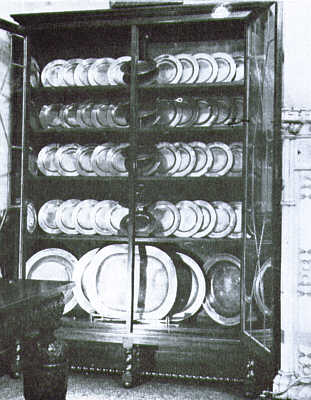
The pewter plates used for the St. Thomas' day dinner
Image from "Bristol as it was 1928-1933" by Reece Winstone (Reece Winstone, 1979, plate 160)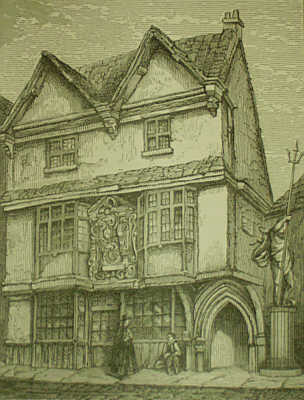
Image from "Bristol Past and Present - Volume 1 - Civil History" by J. F. Nicholls and John Taylor (Arrowsmith, 1881, page
140)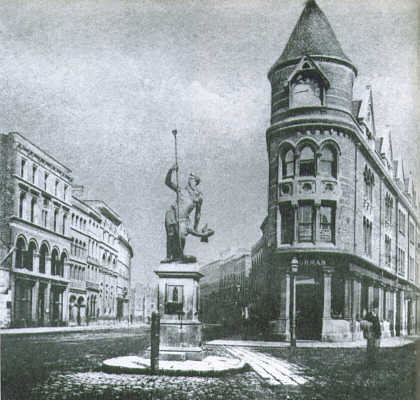
Behind the statue is Victoria Street, to the right is Temple Street
Temple Meads railway opened in 1841 and Victoria Street was built to carry the traffic it created in 1871
Neptune's Statue was moved here from the glebe land in 1872
Image from "Bristol as it was 1879-1874" by Reece Winstone (Reece Winstone, 1968, plate 73)
Image by Adrian Pingstone (June 2004)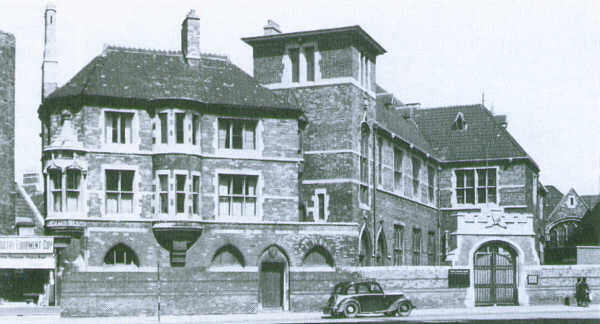
This school was built when Victoria Street was made in 1871
It was demolished in 1973
Image from "Bristol as it was 1940-1960" by Reece Winstone (Reece Winstone, 1988, plate 259)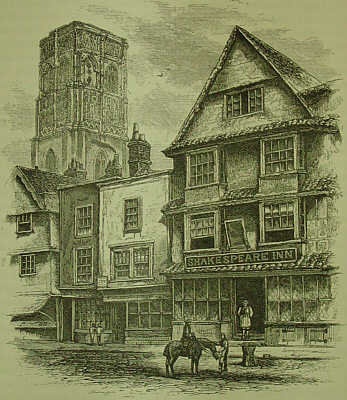
The Shakespeare Inn dates from 1636
Image from "Bristol Past and Present - Volume 2 - Ecclesiastical History" by J. F. Nicholls and John Taylor (Arrowsmith, 1881,
page 141)
For some reason, in the late 19th century the inn also sold clogs.
"Ancient Cities - Bristol" by Alfred Harvey (Methuen, 1906)
"Annals of Bristol in the Eighteenth Century" by John Latimer (1893)
"Annals of Bristol in the Seventeenth Century" by John Latimer (William George's Sons, 1900)
"Annals of Bristol in the Sixteenth Century" by John Latimer (Arrowsmith, 1908)
"A Survey of Parish Boundary Markers and Stones" by the Temple Local History Group (2nd Ed., 1994, ISBN 0-951-00-68-7-8)
"Bristol as it was 1879-1874" by Reece Winstone (Reece Winstone, 1968)
"Bristol as it was 1928-1933" by Reece Winstone (Reece Winstone, 1979)
"Bristol as it was 1939-1914" by Reece Winstone (Reece Winstone, 4th Ed., 1969)
"Bristol as it was 1940-1960" by Reece Winstone (Reece Winstone, 1988)
"Bristol Blitzed" by Reece Winstone (Reece Winstone, 1976)
"Bristol England - City of a Thousand Years" by H. G. Brown and P. J. Harris (7th Ed., Burleigh Press, 1979)
"Bristol in the 1880's" by Reece Winstone (Reece Winstone, 1978)
"Bristol in the 1940's" by Reece Winstone (Reece Winstone, 1970)
"Bristol Past and Present - Volume 1 - Civil History" by J. F. Nicholls and John Taylor (Arrowsmith, 1881)
"Bristol Past and Present - Volume 2 - Ecclesiastical History" by J. F. Nicholls and John Taylor (Arrowsmith, 1881)
Churchcrawler has
the best collection of photographs of Temple Church I've seen.
Temple Hospital - part of the
Bristol Charities site.
"The Merchant Venturers of Bristol" by Patrick McGrath (Society of Merchant
Venturers of Bristol, 1975, ISBN 0-9504281-0-8)
HomePage | Optical Illusions | War Stories | QBasic | Dads Navy Days | Bristol | Bristol, USA | Bristol, Canada | Terre Haute | Miscellany | Web Stuff | About Ray | Site Map | Site Search | Messages | Credits | Links | Web Rings
This page created 3rd May 2005, last modified 11th December 2005